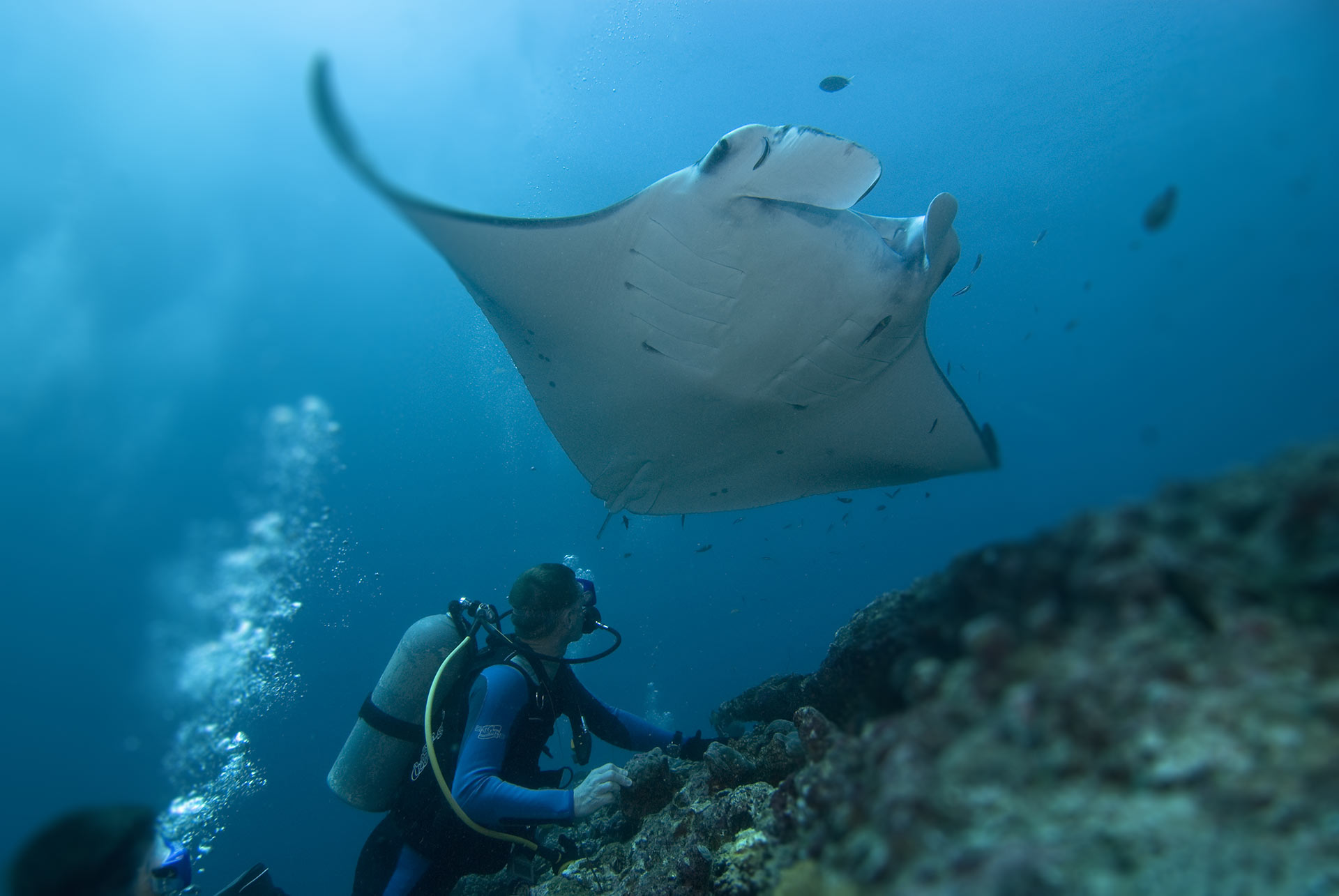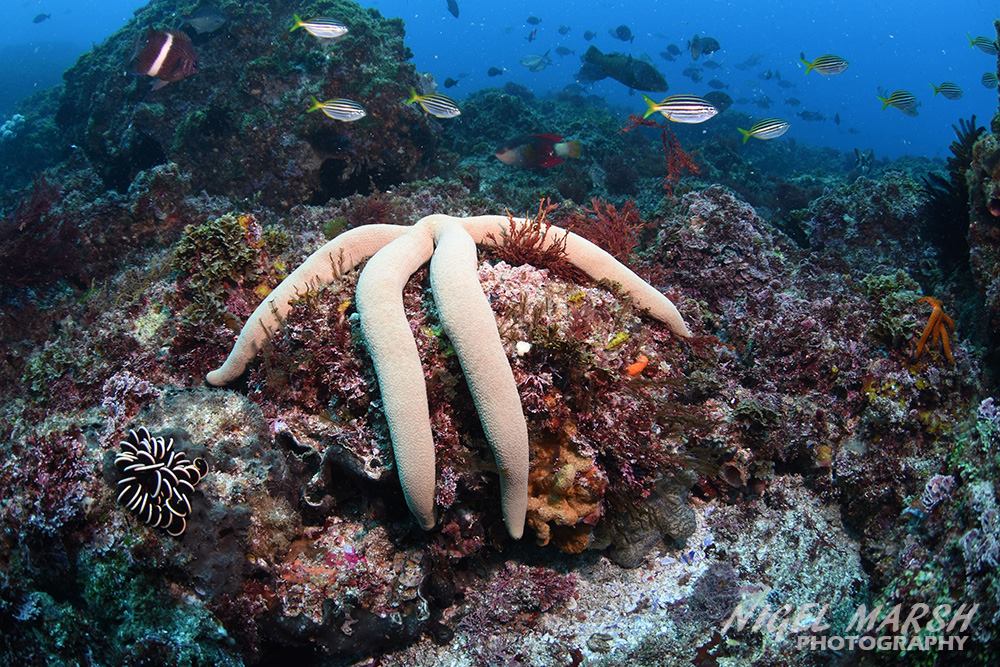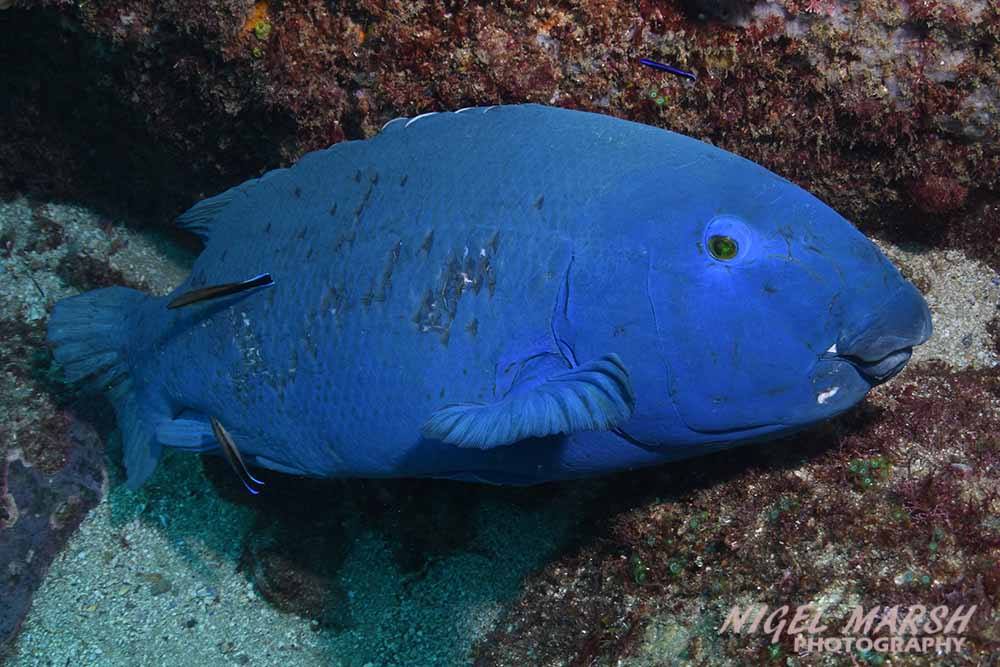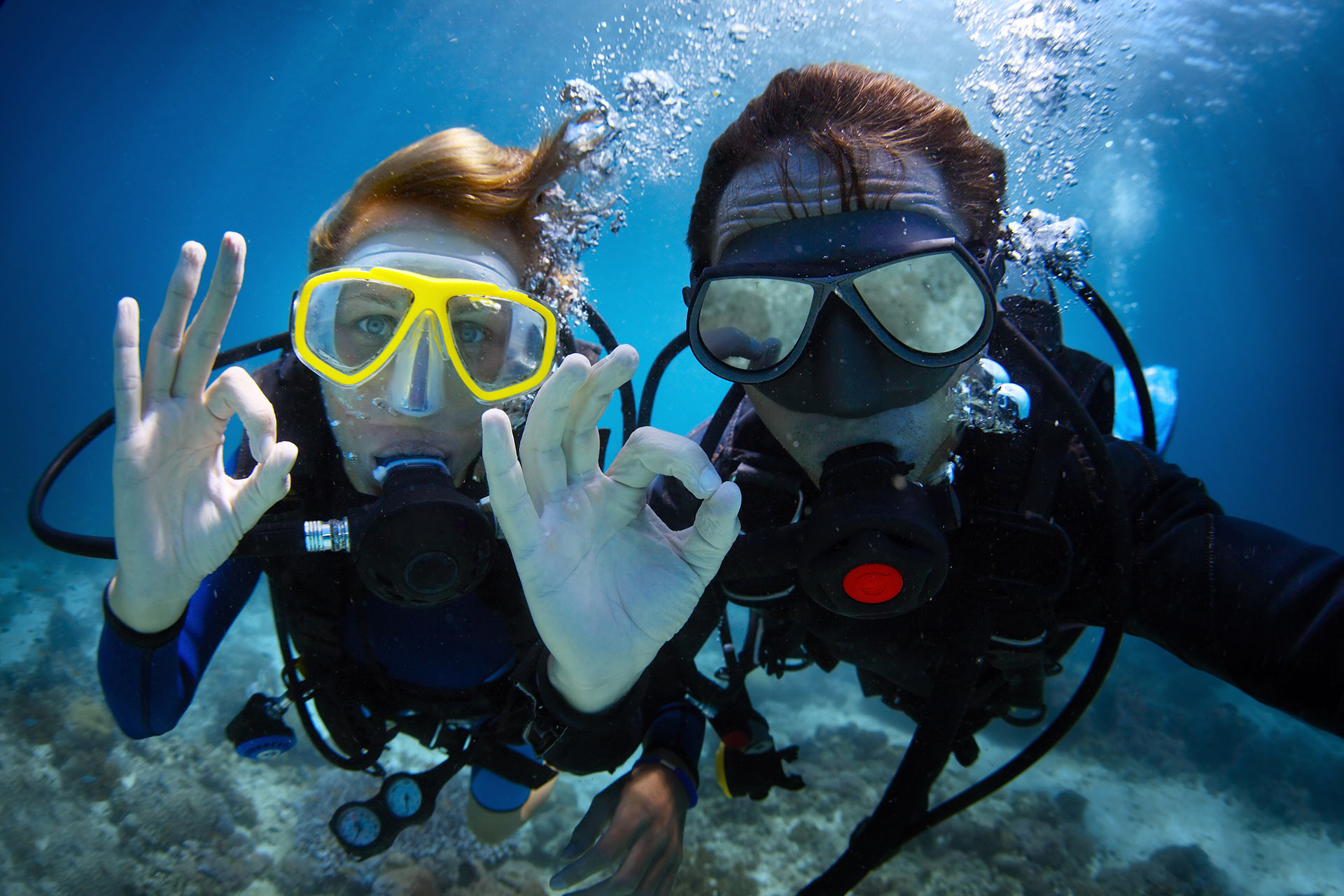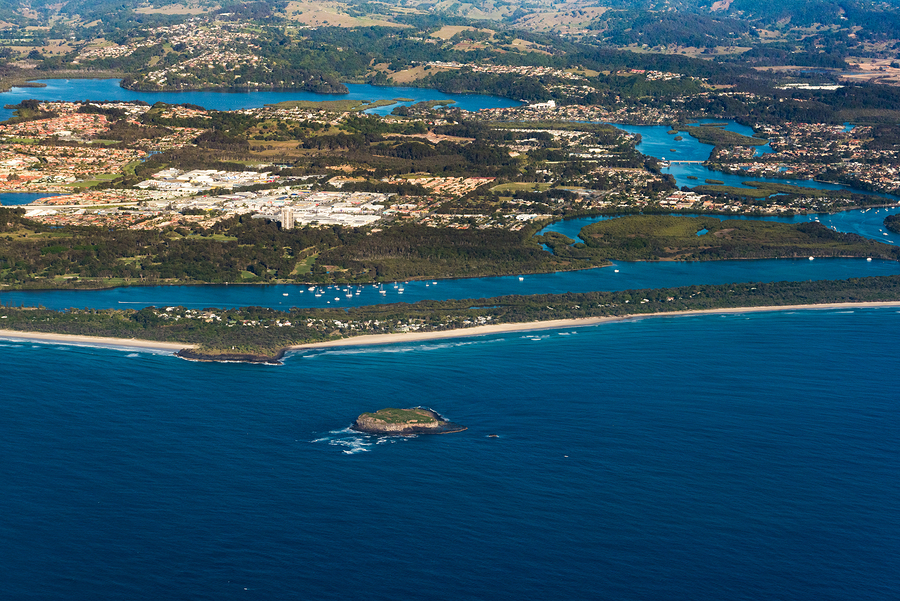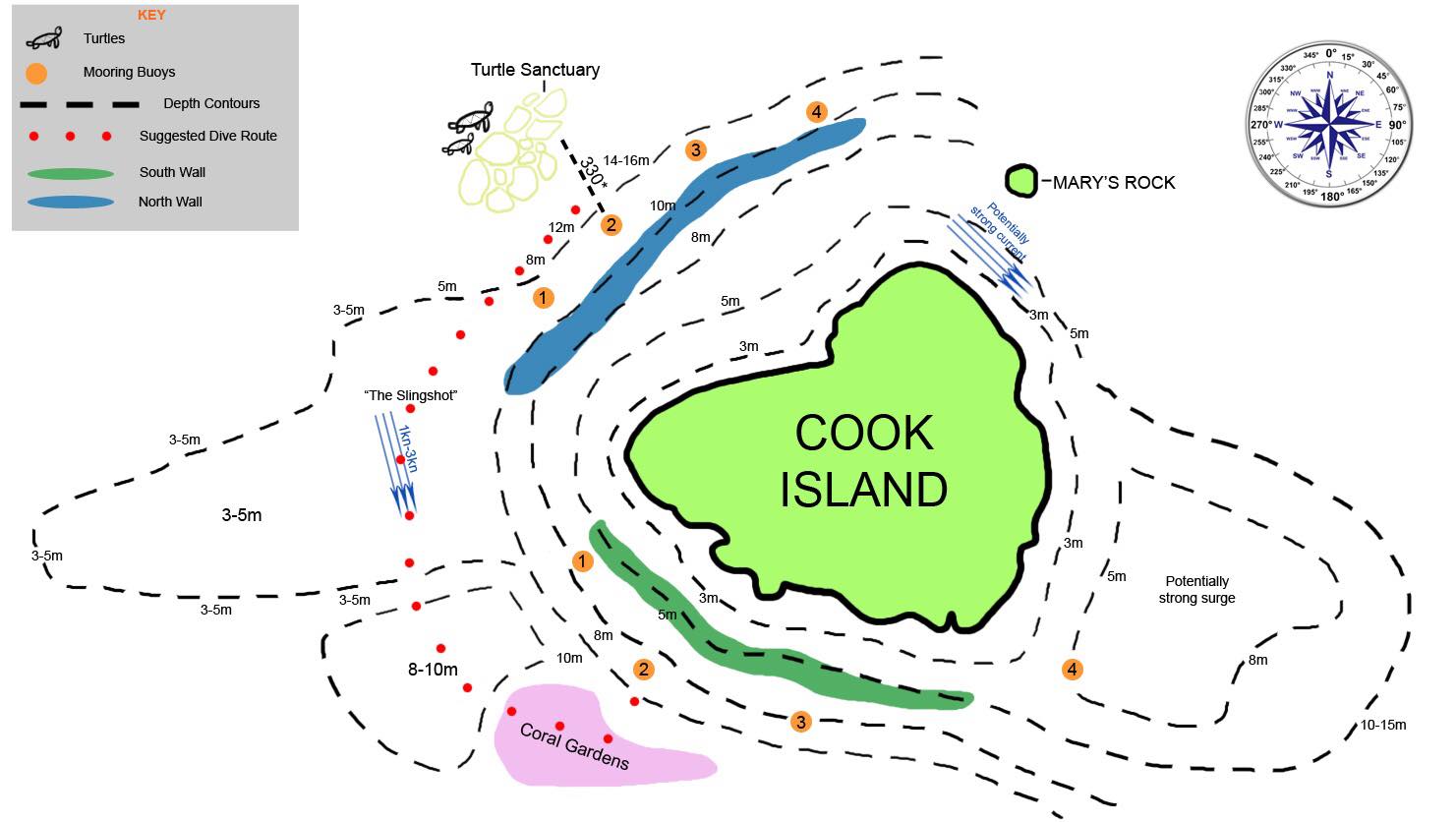Cook Island in New South Whales, is located just 600m off Fingal Heads on the Tweed Coast, an area that is often referred to as the southern Gold Coast. Cook Island is one of the States 12 Aquatic Reserves. Since 1998, Cook Island is protected by law to conserve the biodiversity of fish and marine vegetation, protect fish habitat, protect threatened species and to manage protected species. All types of fishing are prohibited, and several public moorings eliminate the need to anchor, avoiding damage to coral and other marine fauna. The island itself, above the high-water mark, supports a large population of nesting seabirds and is a nature reserve on its own. The recreational use of the exposed island is not permitted. Cook Island is one of the most diverse Scuba Diving and Snorkelling sites our local area has to offer. The department of Primary Industries, NSW provides more information on what you can and can’t do within Cook Island Aquatic Reserve.
How to get there
Cook Island is only accessible by boat. It is a 15-20min boat ride from the Tweed River or about 55min from the Gold Coast Seaway. The Tweed Bar can be hazardous to cross, making the Gold Coast Seaway access the longer but safer option at times. Gold Coast Dive Adventures visits Cook Island on occasions as part of our Reef+Wreck dive tours, departing ex Runaway Bay Marina on our comfortable dive vessel Blue Manta 2.
General Diving Conditions
The exposed rock of Cook Island provides reasonable protection from swell and wind on the opposite side and allows scuba diving even in more challenging surface conditions. The site is large and has several moorings. Depths vary from about 3m to 18m which makes it an ideal site for all experience levels including snorkelers. Cook Island often has slightly better visibility than dive sites north of the Tweed River. To which extend Cook Island is suitable to dive is often dictated by the ability to safely cross the Tweed Bar. The water temperatures are warm all year round with no less than 18 degrees in winter and up to 26 degrees during the summer months.
Marine Life
Turtle Island is the unofficial name or nickname of Cook Island. There are truly turtles everywhere. Further highlights of Cook Islands marine life are the Manta Ray and leopard shark migration during the summer months and the occasional Grey Nurse Shark passing through in winter. The Fauna is diverse with various coral types. The dive site is home to variety of tropical fish, rays and sharks. There is a great balance of larger fauna and smaller micro critters such a nudibranchs.
Dive Difficulty
Most areas of Cook Island are suitable for Open Water Divers and Snorkelers. Even introductory scuba diving can be conducted in shallower areas. The east coast receives south to south-easterly winds and swells for most of the time in a year, making the northern and eastern side of Cook Island the calmest dive sites. In particular the north wall is easy to navigate even for divers that dive Cook Island for the first time.
Our Favourite Dive Plan
No dive is ever the same and conditions on the day need to be considered when choosing sites around the island. As mentioned before, the north wall is a very easy to navigate dive and almost guarantees turtle encounters. This Turtle Sanctuary has a large population of Green Turtles and Clown fish. The turtles come here to visit the cleaning stations. The north wall also has a ledge at 5m, ideal to spend your safety stops.
A fantastic dive plan is to drift along the north wall towards the eastern wall but make sure you take enough weight as this dive will have you turning through the shallows for a little while.
Once you turned around the corner towards the eastern side of Cook Island, large areas of sea grass provide the perfect retreat for even more turtles. Thanks to the moorings, diving Cook Island is reasonable simple, however, following an experienced dive guide is always recommended.
Dive Sites and Moorings
Some nicknamed dive sites around Cook Island are:
o Northern Wall
o Turtle Sanctuary
o Mary’s Rock
o Fido’s Reef
o Coral Gardens
o Bullseye Alley
More Information
Here is a link to a very informative blog post written by Nigel Marsh for Diveplanit: https://www.diveplanit.com/dive-destination/cook-island/
Nigel March Photography also kindly provided us with the photographs for this post. If you like to see more about Nigels work, visit his website: https://www.nigelmarshphotography.com
